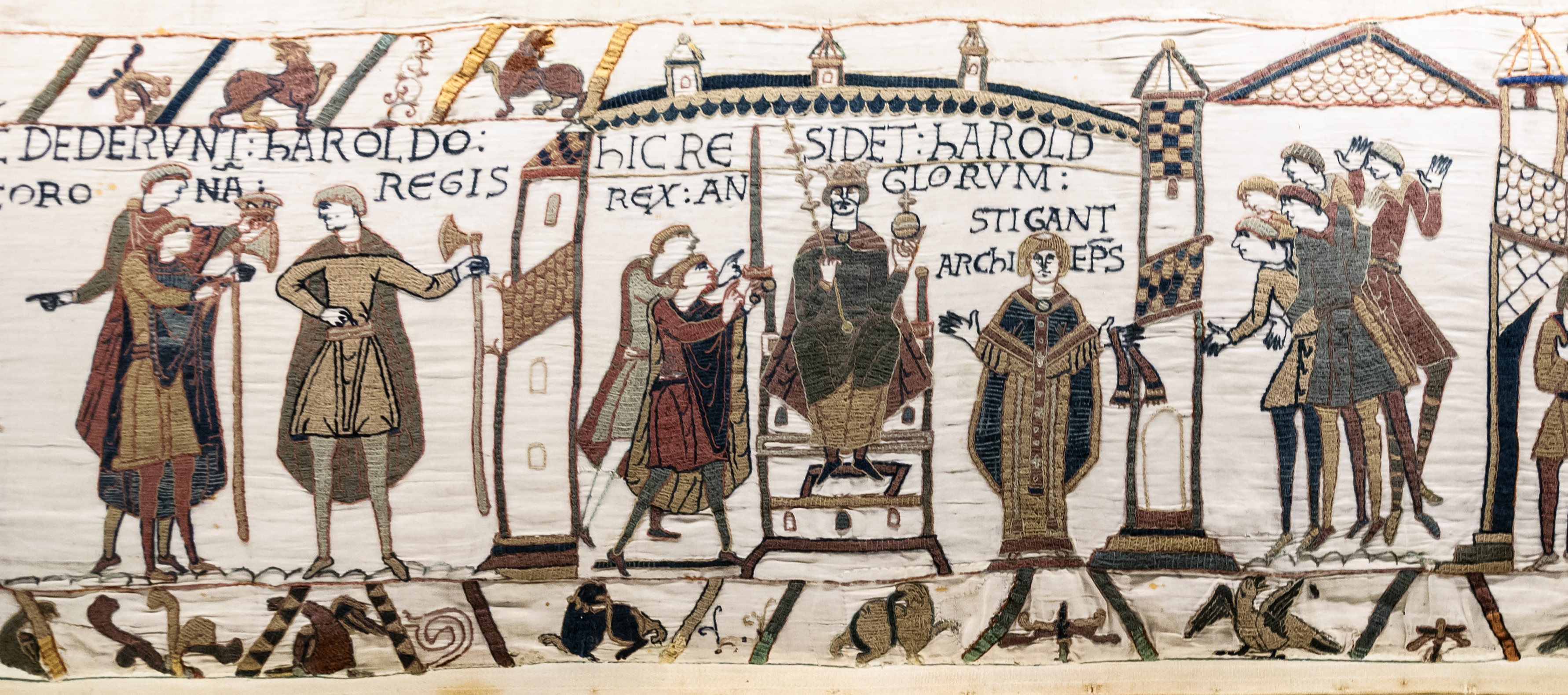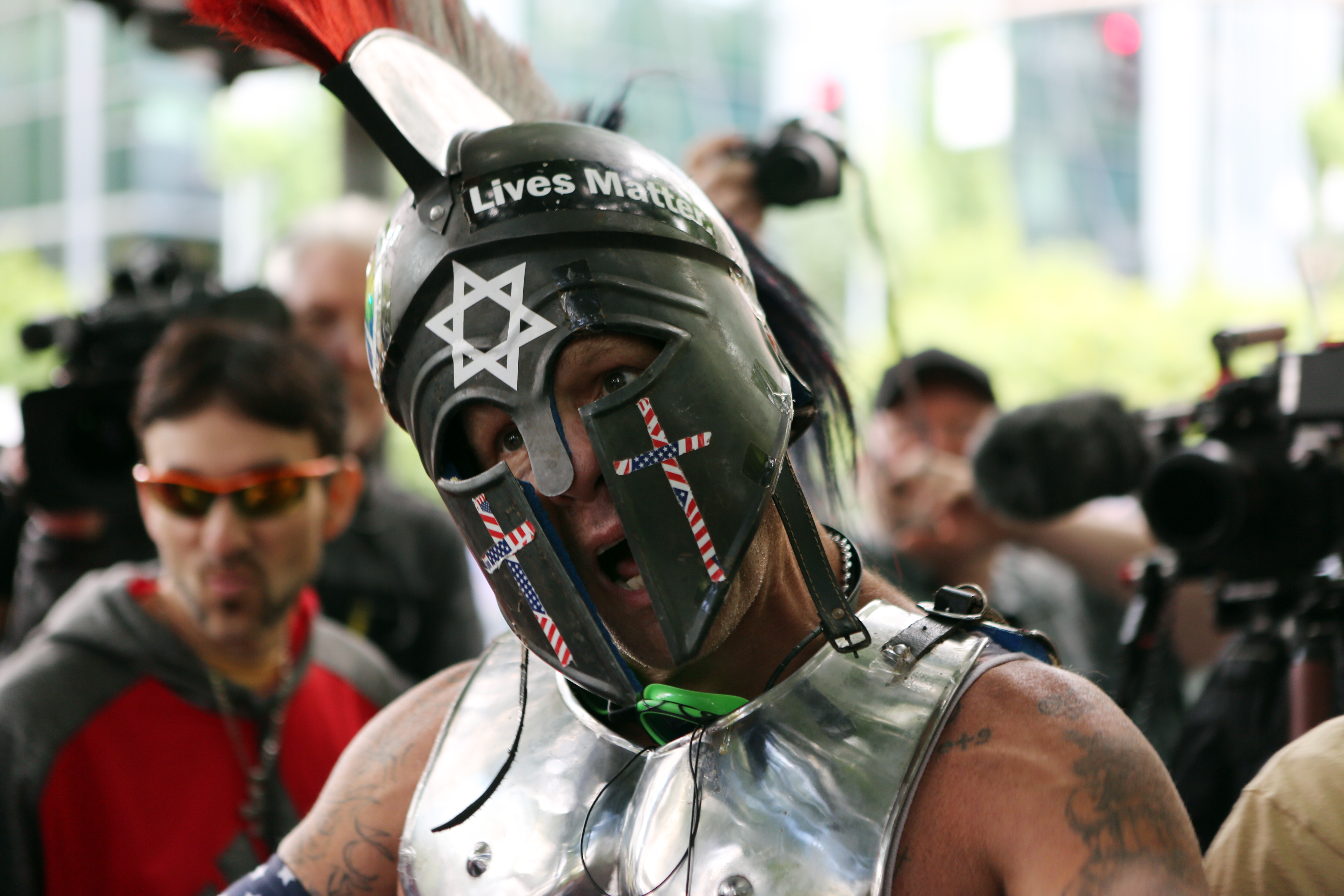
(Photo: Mike Coppola/Getty Images)
Nazis love Taylor Swift. She is thin, blonde, pale, and rich. She doesn’t talk politics much, which might be just a savvy marketing decision, but it also enables wild speculation about her views on Donald Trump, feminism, and whether black lives matter. Nazi devotion to Swift was first reported by Broadly over a year ago, but recent right-wing public celebration of her new album has sparked coverage in the Daily Beast, Dazed, and Elle UK. The latter two articles have mysteriously gone offline. At the pop-culture site Kobini, writer Ella Page called Swift the “blank space the alt-right has been craving.” If she’s not going to fill the space with explicitly articulated anti-racist views, the argument goes, Nazis can project anything they want onto her white visage.
I’m telling you about Taylor Swift because slightly more people care about her than the current controversies embroiling Medieval Studies. Both the mega pop star and the esoteric field face the same problem: Nazis love us and we’re not used to overtly signaling our disdain. I can’t speak for Taylor, but Medieval Studies must do better.
Telling the story of the Nazi love affair with the medieval past doesn’t require blaming medievalists per se. It’s not about whether our intentions are good. Sure, there have been some bad actors among the profession, and there’s a collection of right-wing thinkers in certain subfields, but mostly we’re just a collection of predominantly white scholars who are surprised and disturbed to discover our classes and books might be well-received by white supremacists. Having discovered it, the question is what to do. And the first step is to understand the myriad forms that racist engagement with the Middle Ages can take.
White supremacists explicitly celebrate Europe in the Middle Ages because they imagine that it was a pure, white, Christian place organized wholesomely around military resistance to outside, non-white, non-Christian, forces. Marchers in Charlottesville held symbols of the medieval Holy Roman Empire and of the Knights Templar. The Portland murderer praised “Vinland,” a medieval Viking name for North America, in order to assert historical white ownership over the landmass: Vinlander racists like to claim that whites are “indigenous” here on the basis of medieval Scandinavian lore. Similarly, European anti-Islamic bigots dress up in medieval costumes and share the “crying Templar” meme. Someone sprayed “saracen go home” and “deus vult”—a Latin phrase meaning “God wills it” and associated with the history of the Crusades—on a Scottish mosque. The paramilitary “Knights Templar International” is preparing for a race war. In tweets since locked behind private accounts, University of Reno students reacted to seeing classmate Peter Cvjetanovic at the Virginia tiki-torch rally, saying they knew him as the guy who said racist things in their medieval history classes.

(Photo: Wikimedia Commons)
Fascist groups linking their hate to medievalism is not new. Adolf Hitler did it too. Thanks to the intensification of modern anti-Islamic, anti-Jewish, anti-immigrant, and anti-black movements in North America and Western Europe, and the power of social media to connect local hate groups with each other, these explicit appropriations have become newly visible.
Medievalists are beginning to organize to counter such appropriations. Dorothy Kim, a medievalist at Vassar College (and the person who tipped me off to the Taylor Swift analogy, which I now use with her permission), has written about addressing these issues head-on in curriculum and syllabus design. A group of scholars created the “medievalists of color” collective as a way to urge colleagues to learn from fields such as critical race theory and ethnic studies, the better to understand the “the ideologies and distributions of power that define the modern world.” After the murder of Heather Heyer, the Medieval Academy, a venerable and traditionally culturally conservative body, issued a powerful statement denouncing racism and calling for more diversity in the field. For years, the person behind the Twitter and Tumblr accounts @medievalpoc has been illustrating (literally) the simple fact that there were medieval people of color in pre-modern European artwork. It was never the pure white fantasy of the white supremacists. Early in 2017, Paul Sturtevant at his site The Public Medievalist launched a series on race and racism and the Middle Ages. These efforts and more all aim at derailing the kinds of false claims about a pure white past that racists cherish and propagate.
Until we actually take the time to extract the bigotry from our disciplines, the truth will remain hidden. https://t.co/avVddAJaFm
— medievalpoc (@medievalpoc) September 5, 2017
As I pondered the Taylor Swift dilemma, however, I thought back to other, less explicit ways that I’ve observed white supremacists engaging with the Middle Ages. I’m not sure we’re as ready to handle the racism when it lurks in the subtext and context, rather than when a bigot picks up a Templar shield. It’s easy to overlook both the depths of white-supremacist celebration of the Middle Ages and the ease with which these groups pluck out appealing nuggets of white-supremacist ideology from any product that lacks an explicit rejection of same.
For example, before it was taken offline, I would regularly read the white-supremacist discussion boards at Stormfront, scanning for medieval history content so I could better understand this dynamic. The posters, predictably, spend time celebrating their understanding of the spirit of the Crusades (treating them as a heroic Lost Cause) and gleefully retelling narratives of Jewish expulsion while denying that there was ever a wholesale massacre. But they also chat about movies and television shows and share pictures of medieval artifacts without saying anything racist or false.

(Photo: Natalie Behring/Getty Images)
Take The Hobbit movies. J.R.R. Tolkien was a medievalist. His books remain the quintessential example of popular medieval culture. On the now-defunct Stormfront (still available through archive.org), I read hundreds of posts debating whether The Hobbit trilogy was pro-whiteness, and to what extent the Jews in Hollywood had forced Peter Jackson to soil the original product. Lake Town, in the movies, features characters of color. There’s also a dwarf-elf romance that wasn’t in the original books. One poster wrote, “You can smell the Jew-sheen, adding that female character that is a race mixer and other various black characters.” An author at a different “white identity” site unearthed implicitly white themes in The Hobbit, lamenting that the dark-skinned orcs of the Lord of the Rings movies were replaced by “Azog the Pale.” Yet the posters are generally philosophical. Media is controlled by Jews, they believe, so naturally white supremacist themes are buried. So the posters keep scouring texts for secret racism anywhere that the creator doesn’t explicitly reject it.
Crusader commentary and writing about Jewish history, of course, permeates Stormfront. One poster listed all the times Jews have been expelled from various places as evidence of our perfidy, rather than as evidence of bigotry. Again, this explicit hate must be encountered and rejected by historians. But then I read through a thread, hundreds of entries long, on which Stormfronters simply posted pictures of their favorite medieval castles. They didn’t post them with racist text or commentary, but were just enjoying the beauty and variety of medieval castles. Only the context made these images chilling.
I like medieval castles too. I like medieval armor, churches, sacred objects, and stories. I’ve dedicated decades of my life to studying them. As I confronted the castle photos on Stormfront, though, and similar threads about other artifacts of the medieval past, I thought about all the lectures and classes I’ve given about these objects in which I unspooled their glory, never thinking about the ways in which white supremacists might well seize on my narratives. When I’ve done presentations of medieval castles, kvelling over their crenellations and sophisticated designs to students, I had never paused to consider what subtext a white supremacist might have chosen to extract from my teaching. As a field, we’ve got to be ready for the white supremacist in our classroom—think Peter Cvjetanovic—but we teach so that the rest of the class can recognize and refute racist claims about history.
The western Middle Ages is going to remain attractive to white supremacists. Our solutions to this problem include explicitly signaling our rejection of racism and working harder to diversify the field, but also dethroning the very notion of the Middle Ages—mostly Christian, mostly located in western Europe, isolated from other peoples—itself. How we each choose to act will vary by employment status, risk of violence, and other factors. Not everyone has a platform. Not everyone controls their syllabus. But everyone needs to accept that, like Taylor Swift, the Middle Ages has a problem with Nazis who love us.





